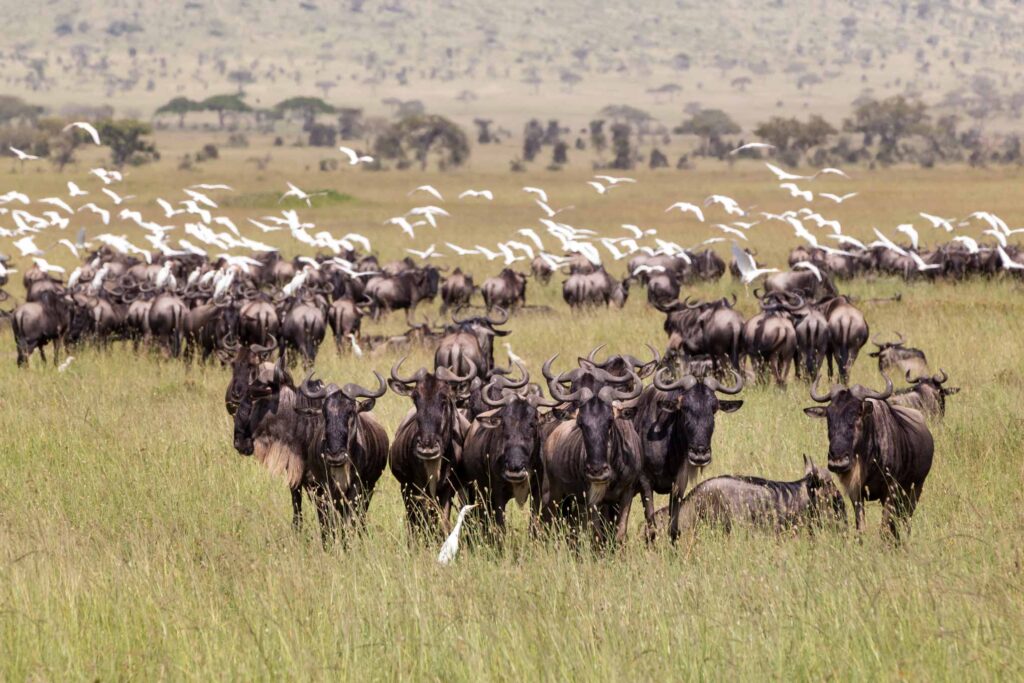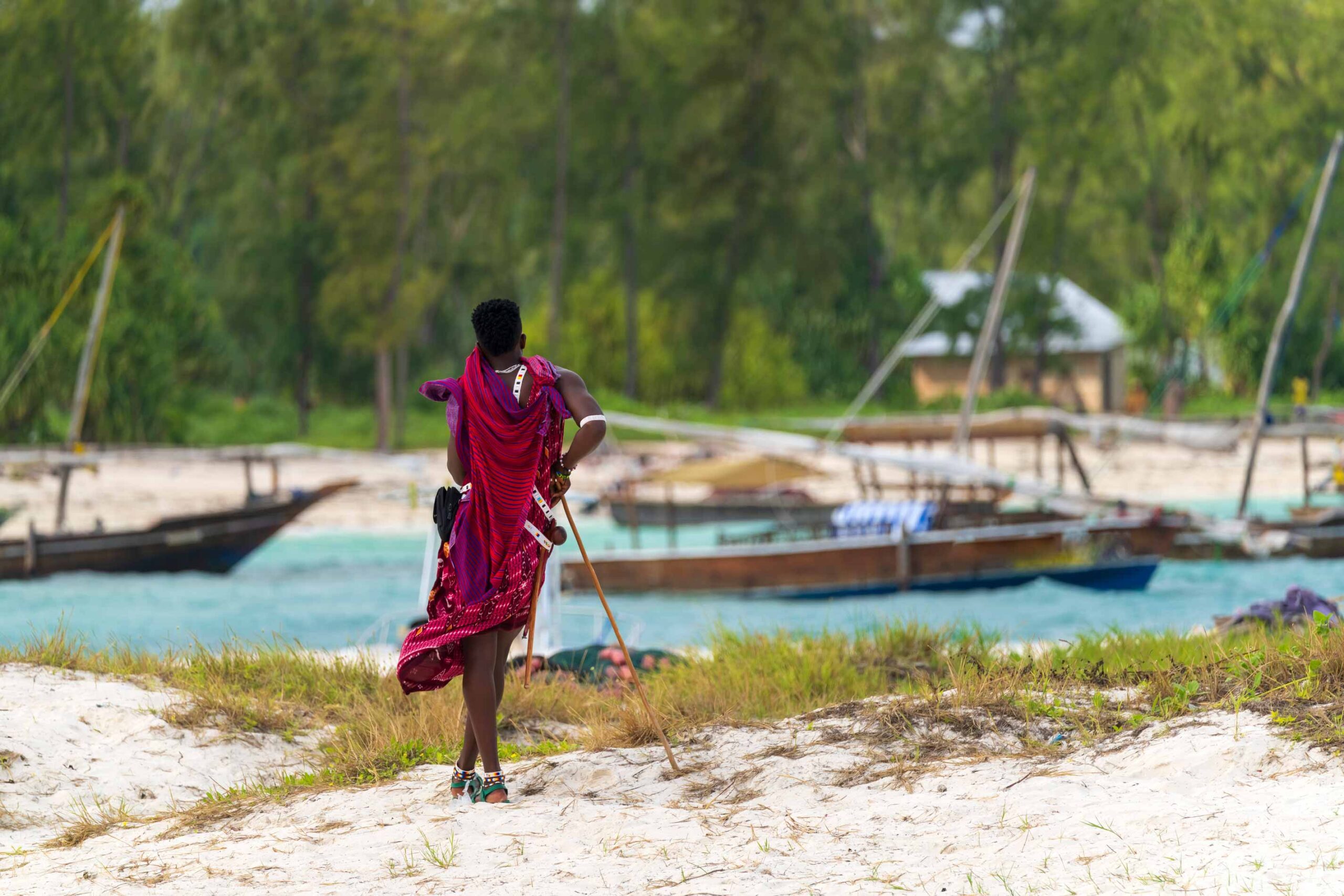When you arrive in Kenya, the land calls out with an energy that’s impossible to ignore. It’s not just the sprawling savannahs or towering mountains—it’s the way the sun seems to shine brighter, the air feels richer, and life pulses with a rhythm that’s unmistakably African. Whether it’s the low growl of a lion breaking the dawn silence, the soft brush of the wind through acacia trees, or the sight of flamingos painting Lake Nakuru pink, Kenya awakens your senses in ways you never expected. Armed with this Kenya travel advice, you’ll be prepared to dive deep into everything this incredible country has to offer, from world-class safaris to secret beaches and everything in between.
About Kenya
Kenya is a country that truly has it all. Nestled along the equator in East Africa, this nation is a wildlife enthusiast’s dream—home to the iconic “Big Five” (lion, elephant, buffalo, leopard, and rhino) and renowned for its vast game reserves like the Maasai Mara. However, Kenya’s beauty goes beyond its wildlife. From the bustling markets of Nairobi to the Swahili-inspired streets of Lamu, there’s a vibrant urban energy that contrasts with the country’s tranquil, untouched wilderness.
- Wildlife: Beyond the Big Five, Kenya offers some of the best birdwatching in the world. Over 1,000 species of birds, including the rare African crowned eagle, make Kenya a bird lover’s paradise.
- Cities: Nairobi is not just a stopover—it’s a destination in its own right. Known as the “Green City in the Sun,” Nairobi balances the excitement of urban life with the proximity of Nairobi National Park, where you can spot lions just a short drive from the city centre.
People and Language: A Cultural Kaleidoscope
Kenya’s true heartbeat lies in its people. With over 40 ethnic groups, including the Maasai, Kikuyu, Luo, and Swahili, the country is a melting pot of diverse cultures, languages, and traditions. Each community brings its unique flavour to Kenya’s vibrant cultural tapestry.
- Maasai and Samburu Tribes: Known for their bright red shukas and intricate beadwork, these pastoral communities are famous for their rich cultural heritage and deep connection to the land. If you have the chance, visiting a Maasai village offers a glimpse into one of Africa’s most iconic indigenous cultures.
- Swahili Coast: On the coast, you’ll experience a fusion of African, Arab, and Indian influences. Lamu Island, with its whitewashed buildings and dhow boats dotting the harbour, feels like stepping back in time.
To connect with locals, try a few Swahili phrases like “Jambo” (Hello) or “Asante sana” (Thank you). A warm smile and a greeting in their language will always be appreciated.
Geography and Climate: A Land of Contrasts
Kenya’s landscapes shift dramatically—from the lush, fertile highlands of Mount Kenya to the arid deserts in the north, and from the coastal paradise of Diani Beach to the rolling grasslands of the Maasai Mara. Each region offers its own unique climate and adventure.
- Mount Kenya: Towering at 5,199 metres, this UNESCO World Heritage Site is Africa’s second-highest peak. The surrounding national park is a haven for hikers, with rugged trails that lead to breathtaking views of alpine meadows and glaciers.
- Coastal Kenya: On the other hand, Kenya’s coast offers a tropical escape. With temperatures around 30°C (86°F) year-round, it’s ideal for beach lovers. Diani Beach, just south of Mombasa, is often cited as one of the world’s most beautiful beaches, perfect for relaxing or exploring coral reefs.
When to Visit Kenya: Timing Your Adventure
The best time to visit Kenya largely depends on what you want to experience. For those looking to witness the Great Migration, the window from July to October is a must. But, for a more tranquil experience with fewer tourists, consider visiting around December during the short rains. This period offers lush landscapes and fewer crowds while still providing excellent wildlife viewing opportunities.
For a coastal retreat, December to March is ideal, when the weather is perfect for diving into the turquoise waters of the Indian Ocean.
Getting Around Kenya: Exploring with Ease
Kenya’s infrastructure is well developed, particularly in major cities and tourist areas. Taxis, Uber, and local services like Little Cabs make getting around cities like Nairobi straightforward, while domestic flights are a convenient option for covering large distances. Kenya Airways and smaller regional airlines connect major cities like Nairobi, Mombasa, and Kisumu.
For an authentic local experience, matatus (shared minibuses) are an affordable, albeit adventurous, way to travel, but be prepared for crowded and sometimes bumpy rides.
What to Pack for Kenya: Essentials for Every Traveller
Kenya’s varied climate means packing smart is key. Here’s a more detailed breakdown of essentials:
- Lightweight clothing for daytime adventures, but don’t forget a warm layer for cooler mornings and evenings, especially if you’re headed to higher altitudes.
- Sturdy walking shoes are essential for safaris and hikes, while flip-flops or sandals are ideal for the coast.
- Sunscreen, a wide-brimmed hat, and insect repellent are non-negotiable, given Kenya’s strong sun and mosquito-prone areas.
- Binoculars will take your wildlife experience to another level, letting you spot animals from afar on safari.
For those heading to Mount Kenya, hiking boots and thermal layers are crucial, as temperatures can plummet at night.
Top Experiences in Kenya: Must-Do Adventures

Kenya is bursting with incredible experiences, but here are a few off-the-beaten-path activities to consider:
- Visit the Elephant Orphanage in Nairobi: A touching and educational experience, where you can learn about the conservation efforts to protect these majestic creatures.
- Lake Turkana: Also known as the Jade Sea, this remote region is perfect for adventurous travellers looking to explore Kenya’s lesser-known landscapes and meet the semi-nomadic tribes living around the lake.
- Hiking the Aberdares: Less popular than Mount Kenya, the Aberdare National Park offers equally stunning views and an array of wildlife, including the elusive bongo antelope.
- Hot Air Balloon Safari Over the Maasai Mara: Imagine drifting silently over the vast savannah at sunrise, watching the golden plains come alive with wildlife. A hot air balloon safari offers unparalleled views of the Maasai Mara, allowing you to witness herds of elephants, zebras, and even lions from a bird’s-eye perspective. This is especially magical during the Great Migration, when thousands of animals traverse the plains below.
- Giraffe Centre in Nairobi: In Nairobi, one of the most interactive wildlife experiences is visiting the Giraffe Centre, where you can get up close and personal with endangered Rothschild giraffes. Feeding these gentle giants from an elevated platform is a once-in-a-lifetime opportunity and a great way to support conservation efforts.
- Snorkelling and Diving in Malindi Marine National Park: Kenya’s coast offers a rich underwater world. Malindi Marine National Park, located near the town of Malindi, is home to vibrant coral reefs, sea turtles, and an array of colorful fish. Whether you’re a seasoned diver or trying snorkelling for the first time, the Indian Ocean waters here are perfect for exploring the marine ecosystem.
- Hell’s Gate National Park: Hike and Bike: For a more active adventure, Hell’s Gate National Park offers a unique experience of hiking or cycling through dramatic landscapes of gorges, cliffs, and geothermal activity. This park is known for its scenery as well as the opportunity to spot wildlife such as zebras, giraffes, and buffalo without the need for a vehicle.
- Lake Naivasha Boat Safari: Escape to Lake Naivasha, one of Kenya’s most beautiful freshwater lakes. A boat safari on its serene waters offers incredible opportunities to spot hippos, birdlife, and even giraffes and zebras grazing by the shores. It’s a peaceful experience, contrasting the adrenaline of game drives.
- Cultural Visit to a Maasai Village: No visit to Kenya is complete without learning about the Maasai people. A visit to a traditional Maasai village offers a chance to learn about their customs, dance with warriors, and understand their deep connection to the land. It’s an enriching experience that gives insight into one of Africa’s most iconic tribes.
- Climb Mount Longonot: For hiking enthusiasts, Mount Longonot, a dormant volcano located near Lake Naivasha, provides a thrilling trek to the summit. The hike offers panoramic views of the Great Rift Valley and the crater below. It’s a moderate challenge, but the views make the effort worthwhile.
- Visit the Karen Blixen Museum: Fans of the movie Out of Africa will find visiting the Karen Blixen Museum in Nairobi a special treat. Once the home of the famous author, the museum offers a glimpse into colonial Kenya and Blixen’s life, surrounded by lush gardens and views of the Ngong Hills.
- Lewa Wildlife Conservancy: For a more intimate wildlife experience, Lewa Wildlife Conservancy offers exclusivity and fewer crowds than the larger national parks. Known for its successful rhino conservation efforts, Lewa offers private safaris where you can track endangered black and white rhinos, as well as other wildlife, in a pristine and secluded setting.
- Explore Tsavo National Park: Split into Tsavo East and Tsavo West, this vast national park is one of Kenya’s largest and most untamed wilderness areas. It’s famous for its red elephants, which take on the color of the iron-rich soil, and the haunting beauty of its rugged landscapes. The park is less touristy than the Maasai Mara, making it ideal for those seeking a more remote safari.
Top Tips for Travelling in Kenya
- Health Precautions: While Nairobi and the highlands are considered low-risk malaria areas, it’s still a good idea to carry anti-malarial medication if you’re heading to the coast or lower-lying regions. Yellow fever vaccination is required for entry.
- Respecting Local Customs: Kenya is generally conservative, particularly in rural areas, so dress modestly. Always ask for permission before taking photos of people, especially in Maasai communities, as it may require a fee.
- Carry Cash: While credit cards are widely accepted in urban centres, cash is still king in rural areas. Mobile payments like M-Pesa are extremely popular, so setting up a local SIM card can make things easier.
Explore Kenya with Visit Africa
Kenya is a land of contrasts, brimming with adventure, beauty, and culture at every turn. Whether you’re trekking through the savannah, relaxing on pristine beaches, or delving into the vibrant city life, Kenya offers a journey unlike any other. So, what are you waiting for? Book your trip with Visit Africa and let the magic of Kenya sweep you off your feet!














